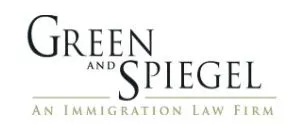On June 26, 2023, Immigration Refugees and Citizenship Canada (IRCC) released Canada's Tech Talent Strategy Backgrounder detailing a strategy to embrace Canada as an emerging leader in global technology talent recruitment, with certain changes targeted to be implemented by the end of 2023. The announcement identified four key pillars to the approach:
- Developing an Innovation Stream under the International Mobility Program (IMP) to attract highly talented individuals to Canada.
- Promoting Canada as a destination for digital nomads.
- Improving labour mobility in North America by creating a streamlined work permit for H-1B specialty occupation visa holders in the US to apply to come to Canada.
- Improving existing programs that cater to workers in high skill technology occupations.
The below will look at the current status of the implementation and consider what the future might hold for Canada's innovation goals.
Innovation Stream Under the International Mobility Program (IMP)
Under the first key pillar, IRCC's aim was to develop an Innovation Stream under the IMP, which means that any new Work Permit category being developed under the Stream would be exempt from the requirement to obtain a Labour Market Impact Assessment (LMIA).
The strategy contemplates the implementation of LMIA-exempt employer-specific work permits for up to a duration of five years for highly skilled workers who are:
- In select in-demand occupations.
- Destined to work for employers who have been identified by the Government of Canada as contributing to industrial innovation goals.
Despite targeting a launch by end of 2023, the Innovation Stream continues to be under development.
What is interesting to consider as we await its launch is how the Government will balance the Innovation Stream Work Permit category under the IMP, with the current Global Talent Stream (GTS) LMIA, Category B, under the Temporary Foreign Worker Program. The GTS LMIA Category B uses an in-demand and technology focused occupations list in determining eligibility to use the program. As companies already have access to the GTS LMIA for the listed occupations, does this signal an expansion of occupations for the Innovation Stream, beyond the scope of the Category B list? Does it signal an overhaul of the GTS LMIA stream or even replacement by the anticipated new work permit category under the IMP? There is a lot to consider and it's no surprise that it may be taking longer than initially anticipated.
It is promising that there are two paths that were identified, one focusing on in-demand occupations and one focusing on employers who are innovating. Under the second path, when considering what the Government has in mind for employers to meet the proposed Stream criteria of "contributing to industrial innovation goals," providing company's with clearly defined and objective assessment criteria would be beneficial to streamline and maximize the use of such a program. As we have seen in practice with the GTS LMIA, Category A, which requires a referral from a designated referral partner, programs which are more restrictive in terms of the eligibility criteria for the employer, and requiring buy in from third parties, can result in limited use cases. In our experience, Category B is more widely used because the occupations list is clearly defined and employers have an objective and independent basis to confirm eligibility.
For the proposed Innovation Stream LMIA-exempt work permits we would like to see a streamlined process which avoids additional steps with third party buy in by establishing objective eligibility requirements for employers across multiple industries. Some industries that we might see being able to use such a stream are cleantech, fintech, artificial intelligence and digital health, to name a few. To truly emerge as a leader in attracting and keeping global technology talent, companies and foreign nationals need to view Canada as a place to grow, and to do that, these programs require broad applicability for employers in targeted industries with a well-developed list of eligible occupations within those industries.
Digital Nomads
Under the second key pillar, the announcement suggested that a digital nomad, which is a person who can perform their job from anywhere in the world, could request entry to Canada as a visitor for up to 6 months; either at the border for nationals from visa-exempt countries or by applying for a Canadian visitor visa for nationals from visa-required countries. The effect of the announcement was not to create a separate application process or stream. Its purpose appeared to be to identify this as an option and to attract people who's foreign employment allowed them to work fully remotely to come to Canada under Canada's existing visitor requirements; the usual assessment criteria and application process for a visitor entering Canada would apply to a digital nomad.
Specifically, any foreign national entering Canada seeking to become a temporary resident (i.e. visitor) is required to satisfy either the border official or the IRCC officer at the consulate/embassy abroad that they are a genuine visitor to Canada and will depart Canada at the end of the period authorized for their stay. The discretion is completely in the decision makers hands, and without guidance on assessing digital nomads, there was some hesitation to leverage this option.
On January 31, 2024, IRCC released a guideline, Temporary residents: Digital nomads, to offer clarification on the requirements for a digital nomad. This guideline reiterated the definition of a digital nomad and advises that those who enter Canada and subsequently wish to work for a Canadian employer will require a work permit. It also specifies that the duration of entry for a digital nomad is 6 months. The same duration applies to a typical visitor such as a tourist; when entering Canada, a visitor is typically granted a stay of up to 6 months, which can be extendable thereafter from within the country where the circumstances permit. It is not abundantly clear from the guideline whether digital nomads can take advantage of the same ability to extend beyond 6 months.
What we do know is that as visitors in Canada, digital nomads can take advantage of Canada's temporary public policy allowing visitors to apply for work permits from within Canada (without having to leave the country or apply abroad at a consulate/embassy). This temporary policy is in place until February 28, 2025.
Work Permit for H-1B Visa Holders
The Work Permit category for H-1B Visa Holders, which was the third key pillar of the June 26th Innovation Strategy announcement, was implemented very soon after announcement. It was extremely popular and the cap of 10,000 applications was met on the very first day the program became available.
In our experience, some of the applicants were leveraging the program as sort of a "back-up" or "just-in-case measure" if they were unable to renew their H-1B status in the US or needed to leave the US for a period of time to assist in recapturing some time outside of the country. It is too soon to understand whether this program had the intended effect of expanding "opportunities available for skilled workers to continue to pursue their careers in the high-tech sector and contribute to economic growth and prosperity in North America." We do not know how many successful applicants have activated their work permits under this program and moved to Canada to pursue employment. We do know that some have remained in the US after receiving their approval letter for the Canadian Work Permit and have not activated it at all.
Giving thought to the goal of this Open Work Permit category which targeted individuals who hold valid H-1B status, perhaps future programs might offer a similar opportunity for an Open Work Permit to STEM graduates who were not selected for an H-1B visa and are therefore likely more motivated in leaving the US in search of opportunities for employment. H-1B visas are issued based on a lottery system with annual caps, so even candidates who meet the qualifying criteria will not be selected. Those individuals who are in the US and are left behind after graduating from degree programs would likely be more motivated to seek opportunities in Canada.
Improving Global Skills Strategy and Start Up Visa Program
Finally, under the fourth key pillar, IRCC discussed the fact that the two-week processing time for the Global Skills Strategy had recovered following the delays throughout the pandemic. In our experience, this has been the case and we are seeing an improved trend with GSS eligible applicants being processed expeditiously.
IRCC also flagged the Start Up Visa (SUV) Program as an area of improvement. Specifically, in recognition of the lengthy wait times for program applicants, IRCC announced that here would be a change to the work permit eligibility under the SUV program to allow an open work permit for a duration of three years, rather than the current closed employer-specific work permit for only one year. This change not only recognizes the lengthy wait time, but also recognizes the fact that Founders need greater flexibility for employment outside of their start-up venture and income earning opportunities while they are in Canada working on growing their start-up. To date, IRCC has not released a policy implementing this change and the work permits being issued to start up visa applicants are still employer specific and one year in duration.
Closing Comments
It is encouraging to see announcements such as this which demonstrate that the Government is taking steps towards supporting innovation, and recruitment and retention of talent in Canada. The Innovation Stream may be a steppingstone to more options for Founders outside of the Start Up Visa (SUV) Program. The SUV program is attractive to Founders who have the means and a truly innovative idea, both of which are required to gain traction and support under this program. However, for highly skilled workers and Founders who are innovating on a smaller scale from the perspective of financial and other resources, an alternative program offering an open work permit would present an attractive opportunity. It could remove constraints and streamline access to Canada's talent market and R&D capabilities for people seeking to grow their idea into a business and would surely facilitate contributions to innovation in Canada.
IRCC also does not presently have a policy on the requirements for employers in Canada seeking to hire foreign nationals in hybrid or fully remote work environments. This was a "hot topic" at last year's Immigration Law Summit which took place in November, and given this has now been a more common employment practice for several years in the wake of COVID-19, Immigration practitioners and employers of temporary foreign workers in Canada are eager for guidance on this subject. Decision makers who are responsible for reviewing work permit applications must be satisfied of the genuineness of the offer of employment. When engaging with offers of employment for hybrid or remote work, especially in the case of remote work, the key question is why the worker is needed in Canada. Decision makers at consulates abroad and Canadian ports of entry are presently exercising their discretion without any policy to refer to. The result is an inability of stakeholders to predict the outcome with any certainty and can lead to inconsistent decision making for factually similar situations. As we advance through 2024, we are excited to see what announcements might lay ahead in this regard.
The content of this article is intended to provide a general guide to the subject matter. Specialist advice should be sought about your specific circumstances.

